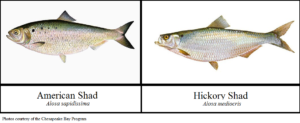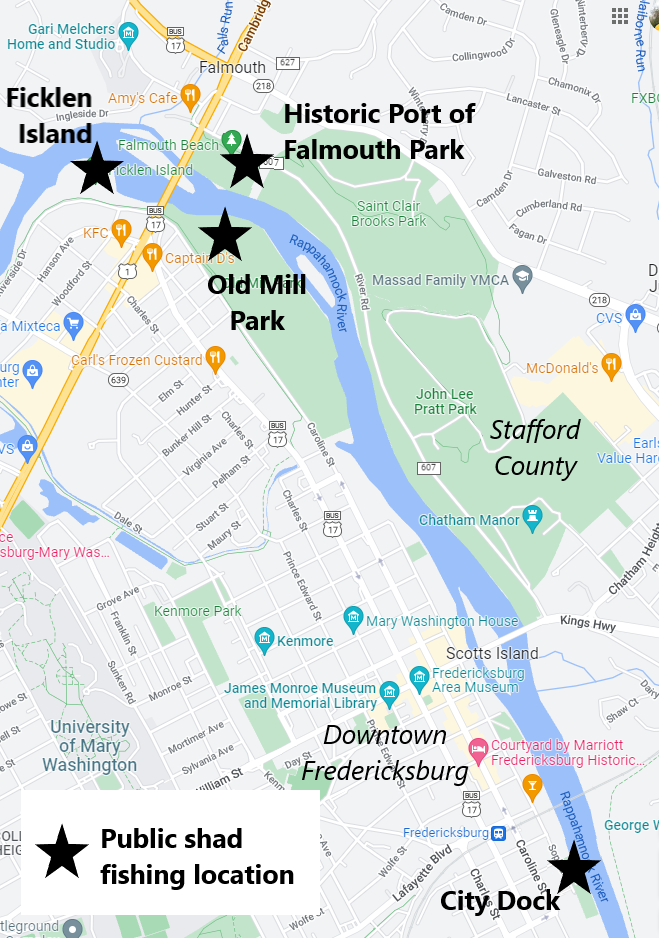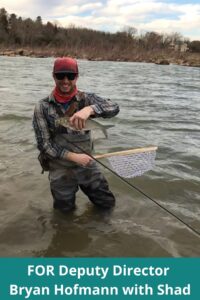What is a shad?
A shad is a type of fish classified in the Alosa (herring) genus, native to the east coast of North America. Shad are schooling fish and are anadromous, meaning that they spend most of their lives in the Atlantic Ocean and enter freshwater rivers to reproduce. Hickory shad are the most common shad species in the Rappahannock, while the larger American shad has declined in population and today is relatively rare.
Can you eat shad?
Shad historically were an important food source for indigenous peoples and early European colonists, but today, they are not commonly eaten. Although shad are a nutritious fish, high in fatty acids, they are too oily and bony for many eaters. Slow-cooking or smoking shad can help make the meat tastier and easier to eat.
When, where and how do you catch shad?
When: Shad travel upstream from the Atlantic Ocean and are most populous in the Rappahannock River during spring. They are most frequently caught between March and May. It is not uncommon for anglers to catch over 100 fish in a day of fishing. Some individuals swear by Mother Nature and wait until the shad bush starts blooming to go fish. Others start right when the cormorants appear at the Fall Line in Fredericksburg.
Where: Shad are typically caught from the bank or a boat using a spin fishing rod or a fly rod. Shad congregate in large schools alongside several publicly-accessible locations in the City of Fredericksburg. Fredericksburg is a national destination for recreational shad fishing, especially for fly anglers.
How: Shad can be caught on spin tackle using artificial lures such as spoons, shad darts and jigs. Fly anglers often choose to use a sinking line and small, brightly-colored heavy flies such as Clouser minnows. Once hooked, shad are known for being energetic fighters and jumpers and have earned the nickname, the “poor man’s tarpon.” Most anglers practice catch-and-release, however, shad are also kept and used as bait for catfish, striped bass and other species.
How do shad spawn?
According to the Virginia Department of Wildlife Resources, female shad release eggs at night when water temperatures reach about 61°F. Once fertilized, the eggs drift downstream with the current and hatch in 48 to 70 hours. Females can contain more than 300,000 eggs. After hatching, the young fry spend their first summer in freshwater and move towards higher salinity waters by fall.
fertilized, the eggs drift downstream with the current and hatch in 48 to 70 hours. Females can contain more than 300,000 eggs. After hatching, the young fry spend their first summer in freshwater and move towards higher salinity waters by fall.
Are shad endangered?
Despite their great abundance in Fredericksburg, current shad populations are believed to represent just a fraction of their historical level. Dams, many constructed in the 20th century and before, block the shad from reaching historic spawning grounds. Sediment and nutrient pollution from upstream have reduced shad spawning habitat.
Written by River Steward Adam Lynch























